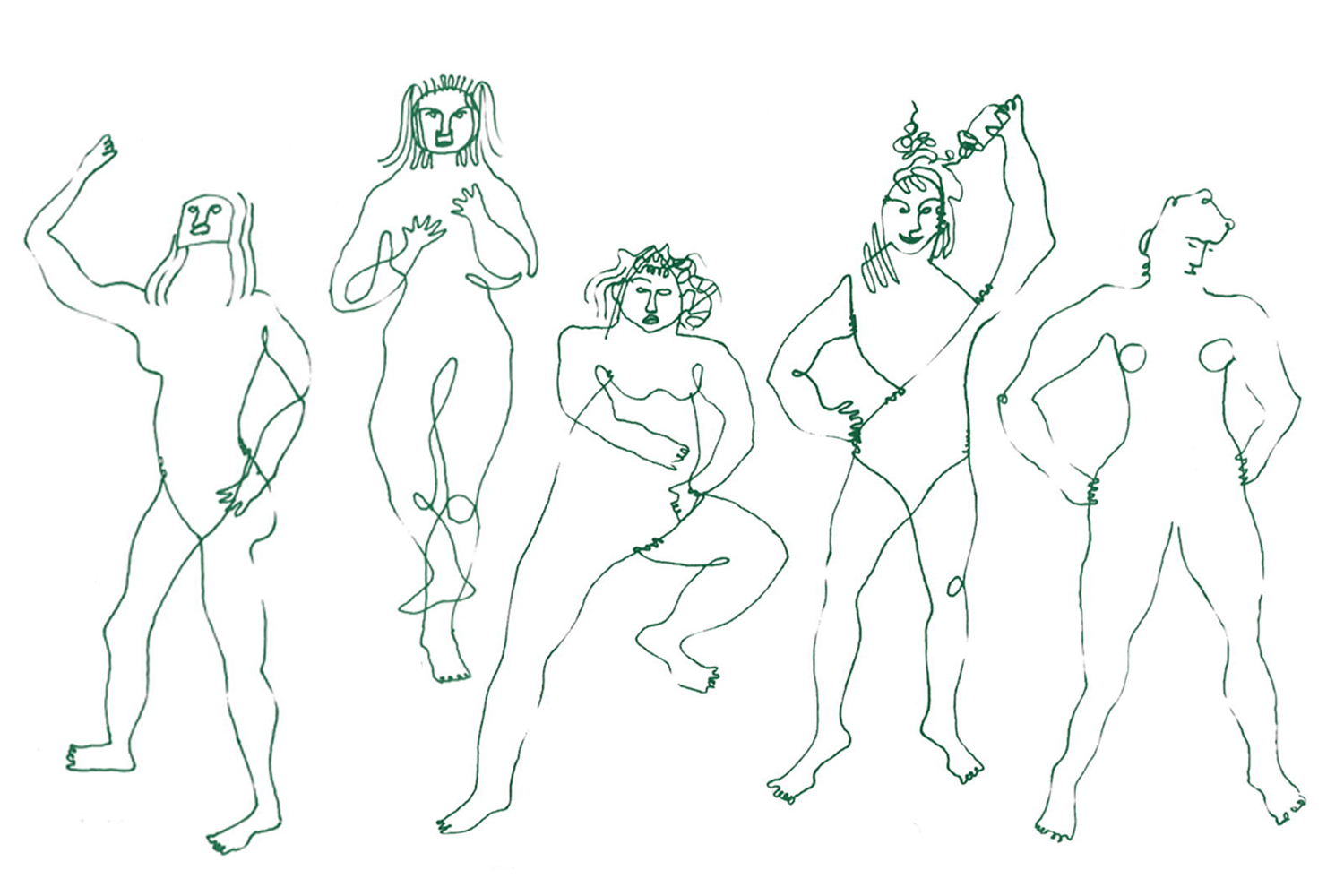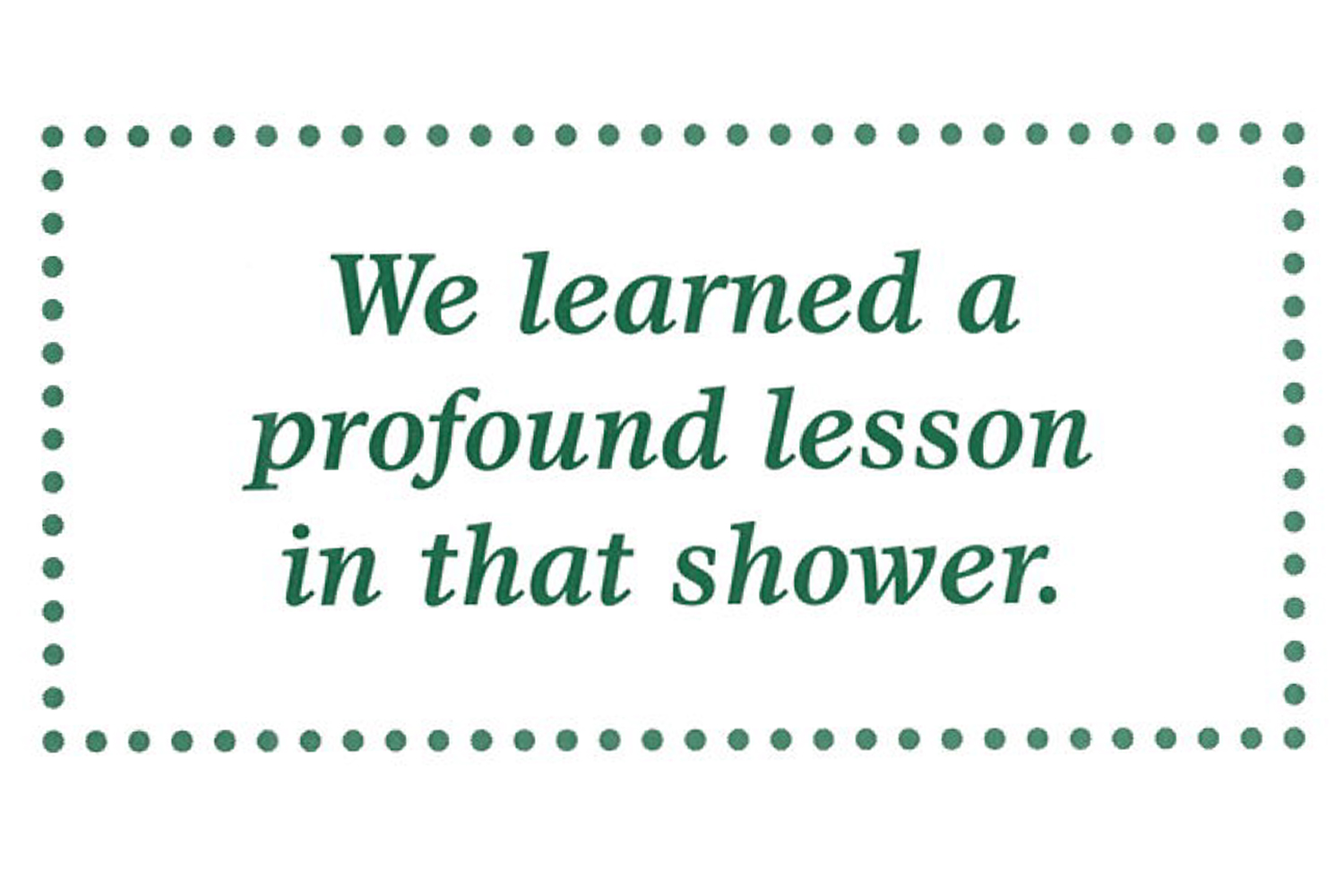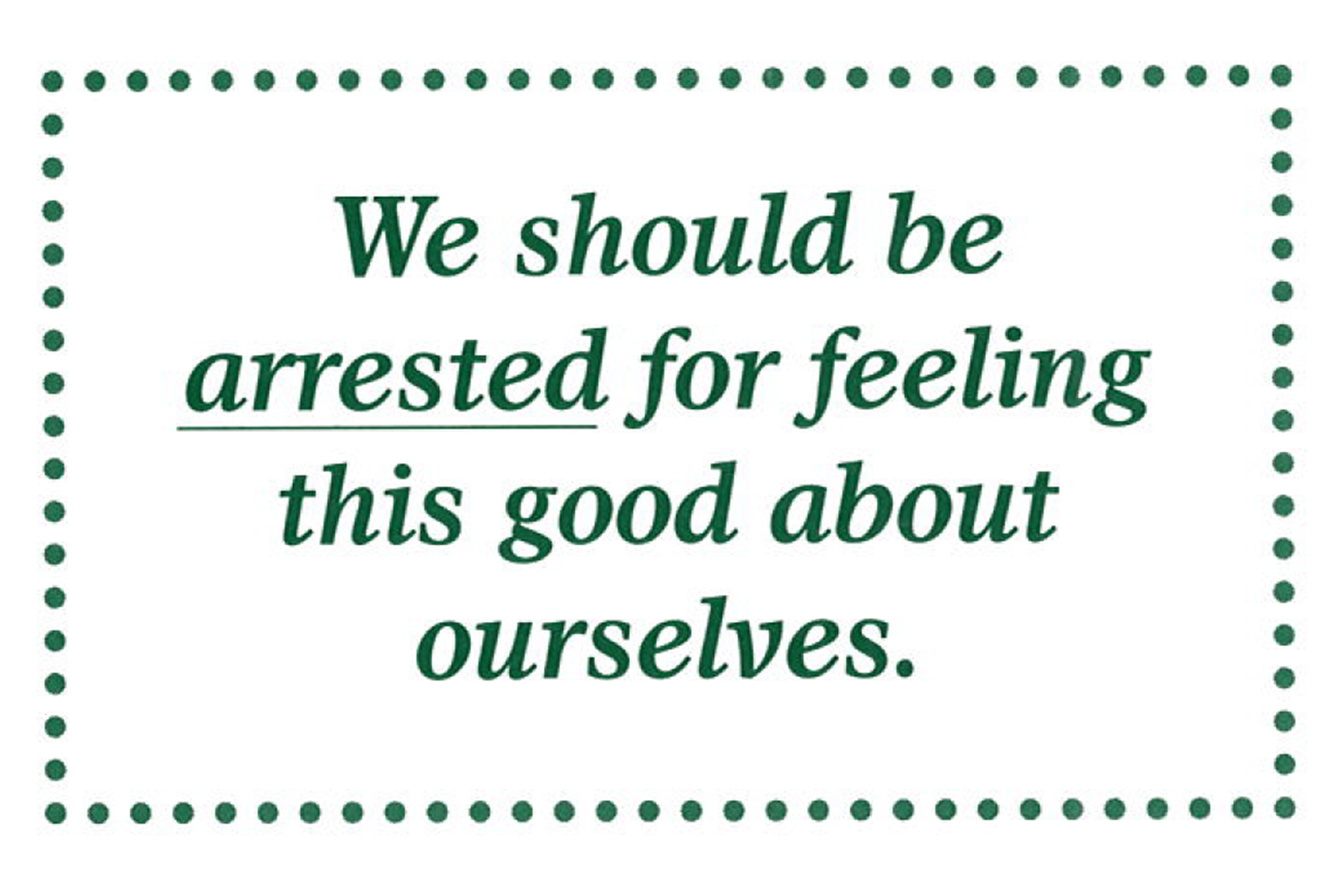
Teenage Girls Who Like Their Bodies? Get Out!!
Not long ago summer-camp girlfriends and I had a sleepover, and at about 3 AM, after we’d exhausted the topics of cute guys and the new 2005 SATs, the talk turned to our 16-year-old bodies: thighs, bellies, hair, boobs, booties. Did we like them? Did Jess wish she had Nomi’s legs, did Maggie covet Natasha’s complexion? Did we hate changing in the school locker rooms, did we plotz at the thought of being seen in our bikinis?
Sprawled out on sleeping bags, munching on mini-marshmallows and Cheese Doodles, we were somewhat surprised to find out that we all shared a similar sentiment; We felt fine about our bodies. Sure, Natasha confided, she wished her “boobs were more symmetrical,” and Maggie, that she had “less hairy upper-inner thighs,” but in a hierarchy of things that obsessed us, these issues fell fairly low on the list. We looked, we all agreed, “good enough” for the locker rooms; and at the beach? well, chicken legs, love handles, flat chests.. .they were just what we’d been dealt.
We knew that this level of body acceptance was very different from that of most teenage girls. America’s consumerist culture, after all—the vast self-improvement aisles at CVS, women’s magazines that promise, month after month, six or eight or 10 steps to a perfect butt, our society’s fixation on Hollywood looks—all seem almost intended to make girls feel like shit. Each one of us knew girls who stuck to mineral water while the rest of us split Chinese food, who passed up incredible class trips because the thought of someone seeing them undressed or without make-up flipped them out.
It was clear to us that our summer camp’s overall culture had, to some extent, immunized us against this teen epidemic of body-loathing, but how?
“The BIK,” Toni said, referring to our camp’s communal bathhouse, a plain concrete building —one side for girls, the other for boys—where we all (campers, counselors, assorted others) day after day, and summer after summer, showered naked with each other. “BIK” is a Hebrew acronym for bait keesay (“house of the chair”), a euphemism for bathroom, and ours—with its no-frills shower rooms—wasn’t anything to write home about. There is the pipe missing its shower head (called the “penis shower,” because water plops out of it directly in a sturdy stream) and dozens of bottles of shampoo, conditioner and body wash, brought by individuals, but intended for use by the collective, strewn over a couple of wooden shelves and the slightly slimy floor.
Early in the morning or late at night there might be only two or tliree showerers in the BIK, but at rush hours like right before shabbat or just after swim, there’s hardly standing room. The building is intended for use by campers 12 or 13 and older, but, as the single-shower stalls in the younger kids’ tzrifim (bunks) inevitably break and flood, the eight- tlu’ough 11- year-olds often use the BIK regularly, too.
In the BIK, a 10-year-old camper rinsing off after swim might suddenly find herself in a room full of naked singing 15-year-olds and counselors—and maybe a nurse or lifeguard or two—every one of them exhibiting an impressive ease with exposing their differently shaped boobs and tushes. Younger girls eavesdropped on older girls’ discussions about their boyfriends, separated parents, what colleges they liked, whether or not Stacey was right to dump Ben; they wondered whether you could use a tampon if you were still a virgin, what a “speculum” was, and how, exactly, the 18-year-old arts-and-crafts teacher made what she called “reusable sanitary napkins.”
“It’s like the Great Equalizer,” said Toni through a mouthful of Cheerios, “a place where you see all these differently shaped bodies that make you realize how ridiculous it would be to spend every minute of every day miserable about how you look.”
“And when you’re eight or 10 or 12,” someone else chimed in, “and you see all the older girls you completely idolize having very not ideal bodies, but they’re singing and chatting and doing the naked Hokey-Pokey, discussing, like, what kind of potato chip they like, you see that they’re one hundred percent comfortable being naked, and you want to have that comfort, too.”
“You wouldn’t think capitalism creates negative feelings about showering naked,” Rachel said, shlepping in the requisite p.c. lingo from our left-leaning camp to sum it all up, “but it does.”
The lessons we learned at the BIK are profound (and extremely counter-cultural). Here are six properties that I think made the BIK work for us:
First, it requires an initial leap of faith. When a girl first steps into the BIK naked (a lot of girls start out showering in their bathing suits, and then there’s that day when they “take it all off”), it’s scary. You have to pretend you feel fine when you really don’t, hoping that pretending turns into the real thing. (It does.) Sonia Isard, 19, says, “I was 10. I remember thinking, ‘Are they gonna know it’s my first time?’ They were all standing around naked, chatting like it was normal. I felt proud. It was a bravery thing, too. I was testing myself.”
Says Naomi Rosen, 17, “I remember where I was standing. I began with my bathing suit halfway down but then, finally, I just took the whole thing off. Everyone was saying, ‘Way to go, Naomi!” and I got a big applause. It’s a hard thing to do, but we all do it.”
Second, there’s a culture of support. The larger culture makes you feel inadequate, and the truth is that the constant competition is exhausting. The BIK is a relief from that. Everyone who steps into the BIK is affirming an implicit covenant: We support one another. Being naked was (or is) difficult for every single one of us—and that creates a feeling of safety.
Mira Shore, 15, says, “Society tells you to only be naked when you’re alone, because you should be embarrassed about your body.” It’s only the willed force of our entire group that allows us to overcome that voice. “I don’t jump to take off my clothes in front of my school friends—it’s different in the BIK,” says Toni Hellmann, 16. “There you are in the shower and you’re finished getting clean,” Naomi says, “but you just stand there, because it feels so great and you feel free. That’s where you become comfortable with yourself, in front of other women.”
Third, it’s multi-generational. The larger culture that young people live in is pretty age-segregated, so the eightto 25-year-old population of the BIK is unique. “You’re ageless in the shower,” says Toni. “Because there’s a variety of ages, there’s such a wide range of bodies and of development that you can’t be abnormal.”
“When you’re younger,” says Mira, “you look up to the older girls. They are infinitely cool. Because you love them, you learn to like all their differently-shaped bodies.” Adds Sonia, “I remember feeling that someone I idolized was standing in front of me, naked, exposed, even while standing on a pedestal, and she was wearing the same thing I was wearing. dered, ‘Can I really be that self-assured when I’m 19?'” Says Toni, “What the madrichot [counselors] showed me about going into the BIK and showering naked and not being afraid, it helped me grow up.”
“Just by looking around at all these bodies in the BIK,” Sonia says, “I figured out a lot How do you shave your legs? Am I shaped funny?” When you start growing pubic hair, does it look weird? And, a question that most of us had at eight or nine, what is that string dangling between some girls’ legs?
In the end, being able to identify with older females is a source of pride. The older girls and counselors, for their part, know that they are role-models for the young showerers, and having that “responsibility” provides a potent incentive to be, as one counselor told me, “positive and open and free about our bodies.”
Fourth, the BIK is a reality check. Showering with dozens of other females over the course of a summer means that you see bodies of all different shapes and sizes. It cures you of the oppressive belief that you’re the only one who is imperfect, “On some level, you know that not everyone ‘beautiful’ can have the same body,” Nomi Teutsch, 16, says, “but on another, you don’t know it. The first time I showered in the BIK, seeing older girls who I had always considered really pretty, I thought, ‘That’s not what I imagined someone attractive would look like.'” Says Sonia, “There was something very important about seeing physical flaws and imperfections on women who I knew were beautiful, and who I knew everyone else knew were beautiful.”

Hannah Waters, 16, says, “I remember when I figured out how padded bras work, because I was looking at this older girl and thinking, ‘She doesn’t have boobs in the shower, but she did in real life fifteen minutes ago….’That was definitely good to know.”
She also recalls one shower during which every girl put forward her largest physical insecurity. Hannah’s overwhelming memory is that she hadn’t noticed any of these things—a mole on the backside of someone’s ear, differentcolored nipples, a faint unibrow, “It suddenly occurred to me that the things I obsessed about, other people weren’t noticing about me, either.”
Fifth, if s pushing back against American culture. It’s unbelievable—and tragic—to realize that it’s actually subversive for females to feel okay about their bodies, to take back our right to feel even adequate.
“Being naked,” says Sonia, “felt like a strong ‘fuck you’ to everything: to myself, the media, the patriarchy, capitalism, girls I was jealous of, boys I had liked but never kissed, heterosexism, big ugly boys who had teased me in kindergarten. I guess it was a big ‘fuck you’ because I knew I was bucking the system just a little bit. It was a battle cry.”
The “fuck you” is also, as Sonia recognizes, aimed at our internalized self-critical voice, the part of ourselves that we have to whack at again and again as if weeding a garden. “In the shower,” says Sonia, “that voice went away and I heard my own voice. And it made me feel.. .sexy!”
Bucking the system makes us feel empowered. It also makes us feel naughty. As one of my friends said, “We should be arrested for feeling this good about ourselves.”
Sixth, it’s joyful! when you’re naked in the shower and your whole self is out there for everyone to see, you basically have nothing more to lose. You can regress to the years before you learned to feel insecure about your body and, like a toddler, just enjoy the opportunity to run around nude.
“I’m naked and I’m doing rikud [Israeli folk-dancing] in the shower! It makes dancing Yoya that much more exciting,” Sonia says.
While we soap up or rinse ourselves off, we sing “Od Yavo Shalom Aleinu,” switching showerheads at every chorus of “Salaaaam…!” We claim a right to the traditional male sport of long-distance spitting, aiming for a friend’s bellybutton or nipple or left ear across the room. Pronouncing, “L’chaim!” (“To life!”), we toss our chests into the air as a carefree toast to sisterhood and all the large, medium, small, saggy, perky, even, lopsided breasts it embraces. It’s pure liberation.
One girl remembers a hysterical BIK discussion about who could be recognized by her breasts alone; another recalls a conversation during which each showerer was provided, free of charge, with a general verdict regarding which of her two breasts was the larger (when else would you ever talk about this?)—because, of course, you can’t tell on your own.
Hannah remembers one time during the school year that four girls and one guy got together for the day. “We made him wait in liana’s bedroom while the four of us squished into her shower. You learn a lot in the BIK, but when the summer is over, what you miss the most is just having fun.”

Can you “take the BIK home” with you? Showering in the BIK is affirming, empowering and fun, and it gives us the tools we need to keep working at the ongoing struggle— against the general culture, for self-acceptance. The greatest challenge is during the winter months, when, lonely under the shower head, you begin to feel too fat, or too flat, and you have to work to recall the lessons of the BIK.
For Rachel Mahler, 15, the best part is coming home from camp. “The thing 1 love so much about the BIK is telling my school friends about it, and having them say, ‘You know, I could never do that.’ The feeling is a combination of pride and gratitude.”
Ends Toni, “At home I try to spread the BIK just by being completely accepting of people—in every way, but especially physically. Everyone has the potential to be comfortable with their bodies, but not everyone has the privilege.”
Anna Schnur-Fishman is a senior at Boston Latin School.
A Reminder of How Unusual This Girls-Shower Culture Really Is
Joan Jacobs Brumberg, professor of history at Cornell University and author of The Body Project: An Intimate History of American Girls and Fasting Girls: The History of Anorexia Nervosa (Harvard 1988), spoke recently with former LILITH intern Ilana Kramer about young Jewish girls and the uneasiness so many of them feel about their bodies.
In The Body Project, I talk about the ways certain appearance issues could generate anxiety in specific ethnic groups; [for example] concerns about skin had different meaning for Jewish girls and Afro-American girls because of cultural stereotypes. There is this notion of “dirty Jews” in the 20th Century. So, for example, something like acne was associated with dirt. It generated a lot of concern among Jewish girls because of the association. Early on a lot of Jewish girls in adolescence were going to dermatologists, even though their socio-economic status was not ample enough.
We need to consider the way ethnic groups and class drive preoccupations in girls. We’re not a culture that encourages a great deal of heterogeneity in our beauty ideal.
I think a lot of Jewish young women feel the struggle to be beautiful is an uphill battle, because our genetic heritage, in many cases, does not match the cultural ideal.
Girls [in general] are dealing with the fact that girl culture is not always kind or cooperative, the way it seems to have been in the past. Girls in the 19th century had a much different relationship to their peer group back then. There was an intergenerational group, and much more contact with older women besides your mother.
I think that all girls today are dealing with complications of opportunity and greater educational equity. Girls now are competing for the same things that boys are competing for, as well as maintaining that very conventional heterocompetition for popularity and boys. And now there’s an added pressure to have a perfect body.

